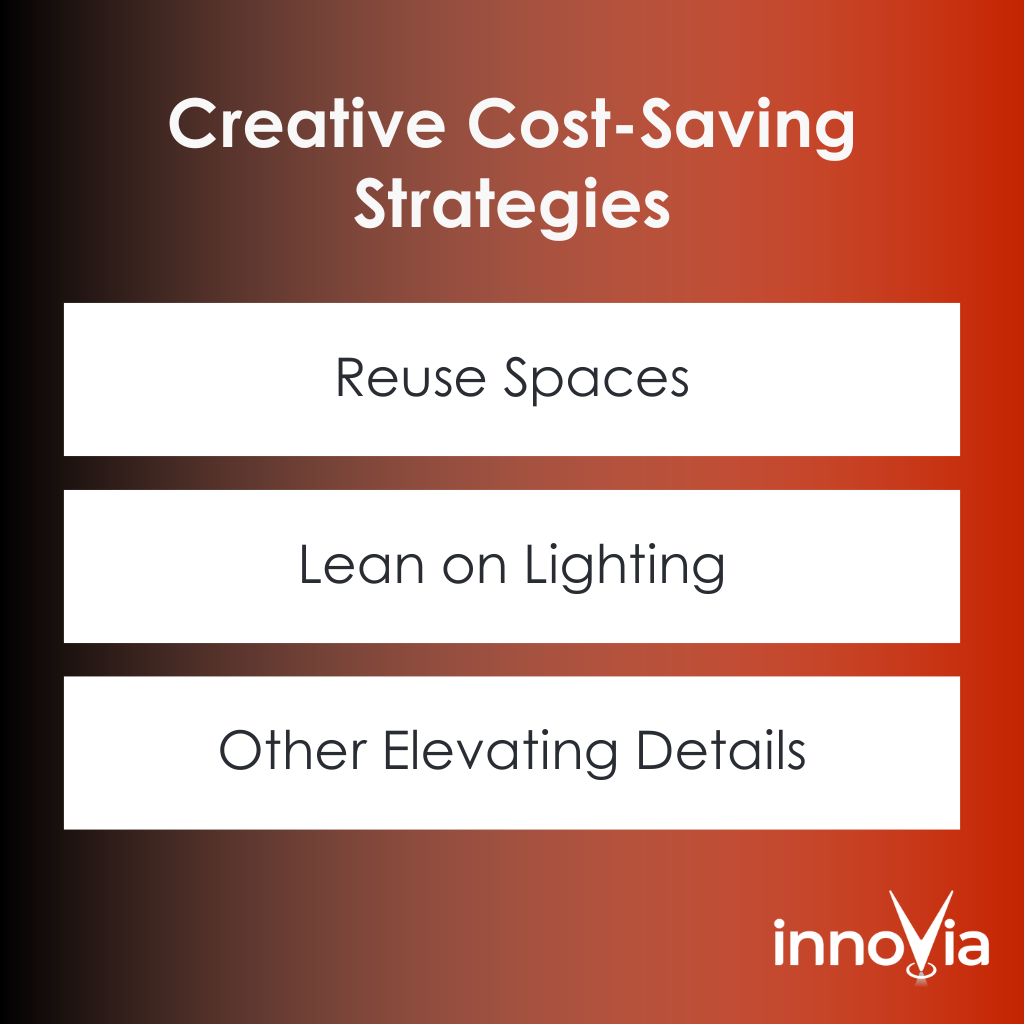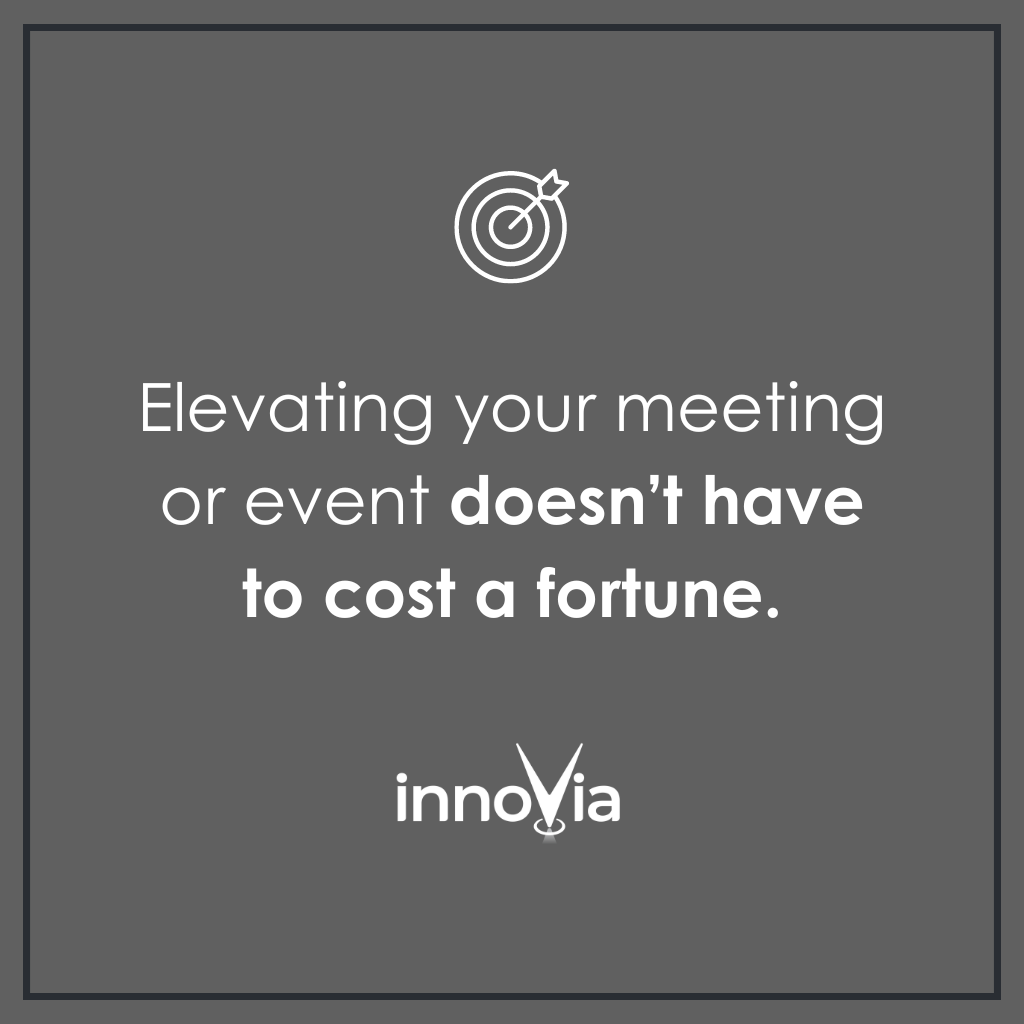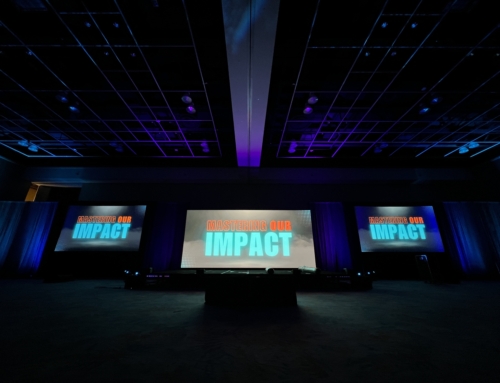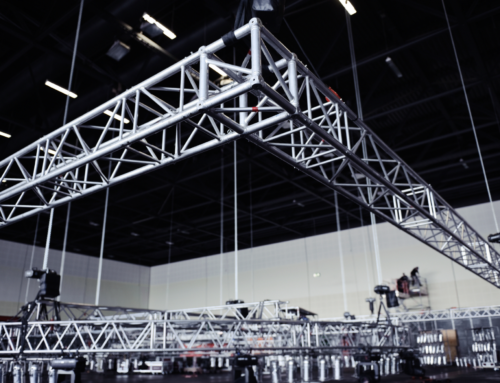If you’ve ever spent hours staring at a blank spreadsheet, trying to pull money out of thin air, you know budget limitations make large-scale event planning a challenge.
We understand. Budgeting for a large meeting is overwhelming and often frustrating, and knowing where to begin is hard.
At innoVia Productions, we’re here to help you through every step of the event planning process. If you’re looking for a starting point, you’re in the right place.
Here’s our guide to optimizing your production budget.
The Secret to Large-Scale Event Planning and Budgeting
Event details change throughout the planning process, but creating a solid agenda early on will help you establish — and stay within — your production budget.
It’s okay if the number of breakout sessions goes from 10 to 12 as you work out the details. Start by writing down how many days of breakouts you anticipate and how many people will join. This will give you a better idea of each event room’s production needs.
Partnering with a production company early also ensures successful large-scale event planning. Even with a vague starting point, the right partner will provide equipment and staff recommendations.
Some innoVia clients have come in with nothing but a rough budget and an estimated headcount. Based on that, we’ve created proposals that have become successful events that attendees remember fondly for years.
Experience vs. Expense: Striking a Balance
You want your events to be memorable and exciting, but you need to keep a close eye on your budget. How do you balance the “wow” factor with your bottom line?
I’ll let you in on an industry secret: you don’t need to have it all figured out right away.
Instead, communicate your budget and ask your production company for options below, at, and slightly beyond your budget. At innoVia, we create renderings for every upgrade. With these images, you can decide whether you want an elevated scenic look, branded items on stage, or flashy lights for your awards ceremony.
Decide where you want that “wow factor,” and your production partner can provide options aligning with your budget and vision. Discuss what type of meeting you’re holding, the scope of the event, and where you want to make the most significant impact.
Have your partner put together renderings for basic and elevated options. That way, if you need to validate or justify a higher-end look (and the budget increases that may accompany it), you can show other stakeholders why and what it entails.

Creative Cost-Saving Strategies
Elevating your meeting or event doesn’t have to cost a fortune. Consider these cost-saving strategies when large-scale event planning:
Reuse Spaces
Using different rooms for each type of session puts event planners over their budget. For example, some planners instinctively book separate rooms for meals and awards ceremonies. Holding two general session-type meetings in two separate rooms doubles your budget; it requires more space, equipment, and labor.
If you know different sessions need AV equipment, try keeping them in the same room. Using airwalls to prepare a large room for breakout sessions saves money when done correctly.
Also, use timing to your advantage. Instead of going back and forth or setting up and tearing down airwalls (which will add to your costs), hold breakout sessions at the end of the day. That way, your AV company has plenty of time to separate equipment and set it up properly while the hotel staff erects airwalls and resets seating arrangements.
Lean on Lighting
Not enough people take advantage of lighting options. Designing different looks for different sessions completely changes an event’s tone. For example, changing the color or brightness from morning to afternoon to evening makes an event feel planned and sophisticated.
Other Elevating Details
As an event planner, you have big ideas for communicating your meeting’s message. Even when you don’t have the budget to match, little details still make an event feel expensive.
Here are a few examples:
- Soft seating on stage for a comfortable tone
- “Voice of God” announcements to introduce speakers
- Mood-setting walk-up music

Common Budgeting Mistakes to Avoid
Successful large-scale event planning hinges on anticipating the little changes that inevitably pop up.
A change as simple as adding an extra speaker can affect everything from the number of microphones to the number of audio techs. These little changes impact your budget.
Planners often overlook:
- Virtual attendees’ needs
- AV equipment for breakout rooms
- Recording equipment for meetings and breakout sessions
- Presenter preferences such as confidence monitors
- Audience microphones for Q&As
To avoid overlooking these budget-breaking details, think through your agenda ahead of time. Since you can’t always account for last-minute changes, be as prepared as you can for the unexpected.
Find a Partner That Asks the Right Questions
A valuable production company will ask questions throughout the large-scale event planning process that help you narrow in on the proper budget for an event. At the same time, they’ll point out ways you can save and luxuries worth investing in.
We at innoVia ask the critical questions. We never set you up for failure; we want to ensure you have everything you need at the right price. Contact us today to finally fill in that blank spreadsheet.






